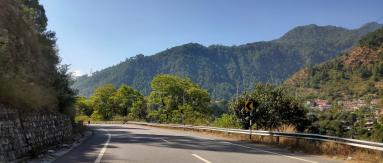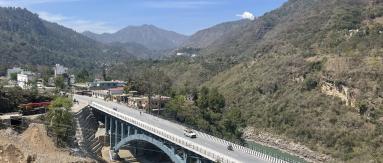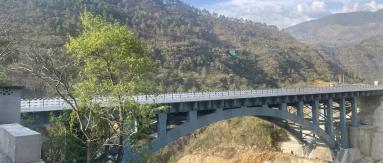- फीडबैक
- साइट मैप
- मुख्य विषयवस्तु में जाएं
- स्क्रीन रीडर एक्सेस
- A+ A A -
- A A
- नियंत्रण कक्ष नं. - 9205949400, 011-26768950
Geographical Location
Nestled in the lower reaches of the majestic Himalayas, Uttarakhand shares its international borders with Tibet to the north and Nepal to the east. Domestically, it is flanked by Himachal Pradesh on the northwest and Uttar Pradesh to the south. Historically, this region was part of the United Province of Agra and Awadh, established in 1902. The name was simplified to the United Province in 1935, and later in 1950, it was known as Uttar Pradesh. It wasn’t until November 9, 2000, that Uttarakhand was officially carved out as a separate state, becoming the 27th state of the Indian Union.
Renowned as "Dev Bhoomi" or the "Land of the Gods," Uttarakhand is steeped in spirituality, home to countless temples and sacred sites that draw pilgrims from across the globe. Beyond its religious significance, the state's serene mountains, lush valleys and untouched natural beauty make it a haven for nature lovers and adventure seekers alike.
- Capital: Dehradun | Largest City:
- Districts: 13 | Total Area: 53400 sq km
Festivals of Uttarakhand
Sure! Here's a completely rewritten and refreshed version of your text, keeping all the core details intact but presenting them in a new way:
Festivals of Uttarakhand: A Celebration of Culture, Seasons, and Spirituality
Uttarakhand, nestled in the lap of the Himalayas, is a land of vibrant traditions and deep-rooted spirituality. Its festivals not only highlight the agricultural rhythms of life in the hills but also reflect the unique cultural tapestry of the state. From age-old harvest rituals to rare blooming flowers, here's a look at some of Uttarakhand's most cherished celebrations:
Harvest and Seasonal Festivals
Harela and Bhitauli
Primarily observed in the Kumaon region, Harela and Bhitauli are closely tied to nature and agriculture. Harela, symbolizing greenery and new beginnings, is celebrated at the start of the monsoon and marks the sowing season. Bhitauli, on the other hand, arrives in spring and revolves around familial bonding and blessings, especially for young girls.
Phool Dei
Heralding the arrival of spring, Phool Dei is a heartwarming tradition where young girls decorate doorsteps with flowers and offer traditional sweets, invoking prosperity for households. Celebrated on the first day of the month of Chaitra, this festival is all about joy, generosity, and welcoming the new season.
Solar and Cultural Celebrations
Makar Sankranti
Just like in other parts of India, Uttarakhand celebrates Makar Sankranti with great enthusiasm. Marking the sun’s movement into the Capricorn zodiac, this day is observed with rituals, fairs, and the preparation of special foods like sesame sweets. It signals a time of spiritual renewal and changing seasons.
Uttarayani Mela
Coinciding with Makar Sankranti, the Uttarayani Mela is a festive gathering held in towns across the Kumaon region. It is not only a time for religious rituals but also for socializing, trading local goods, and enjoying cultural performances.
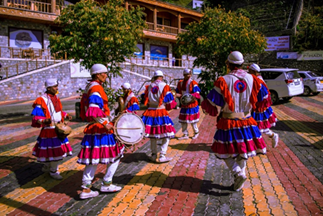
Tourist Places
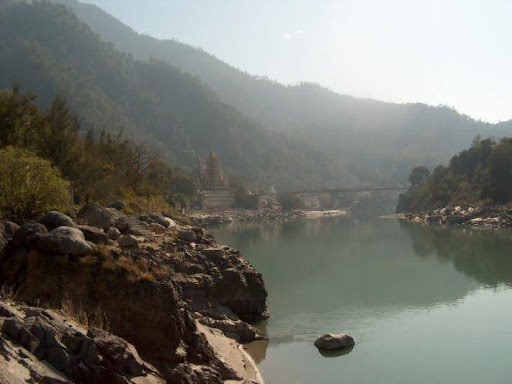
Rishikesh
Rishikesh is town in the Dehradun District of Uttarakhand state in India. Total population of Rishikesh is 75,020 (53% male and 47 % female) as of 2001. Rishikesh is situated at 409 meters above sea level in the foothills of Garhwal Himalayan Range and surrounded by the Shivalik range. Rishikesh is 35 kms far from Haridwar, 90 Kms from Mussoorie, 25 Kms far from Jollygrant airport Dehradun, and 240 kms far from New Delhi.
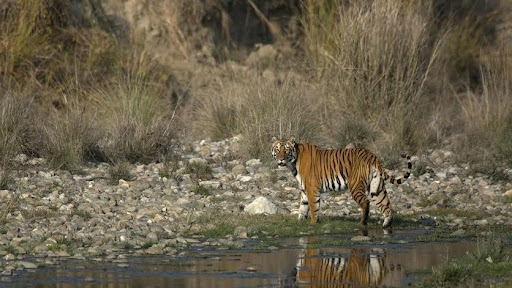
Jim Corbett National Park
Jim Corbett National Park, is a lush wildlife sanctuary renowned for its diverse flora and fauna. It’s especially famous for being a stronghold of the Bengal tiger. The Dhikala zone, one of the park’s most popular regions, is a prime spot to witness tigers, leopards, and wild elephants in their natural habitat. Meanwhile, the Sonanadi zone, nestled along the Ramganga Reservoir, offers sightings of elephants, leopards, and a vibrant variety of bird species, making it a haven for wildlife enthusiasts and bird watchers alike








